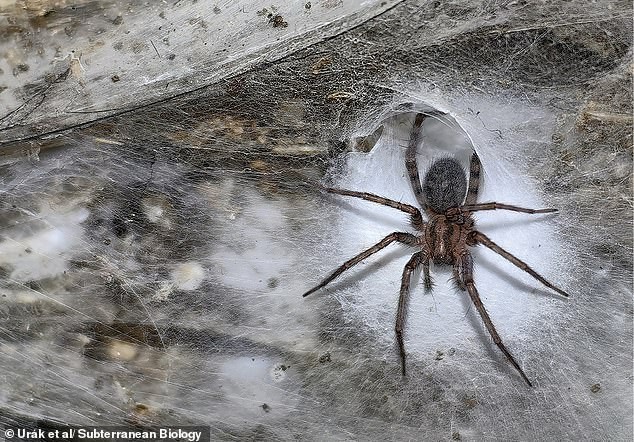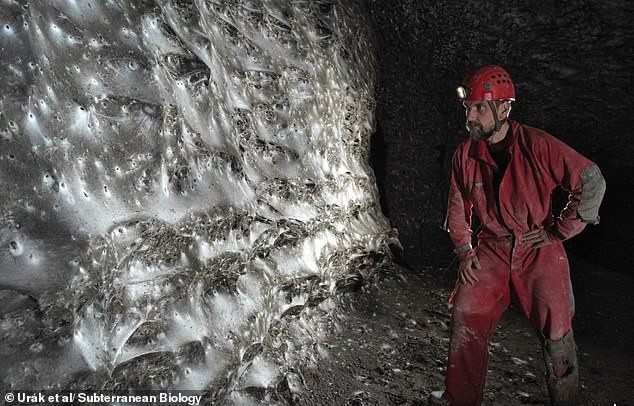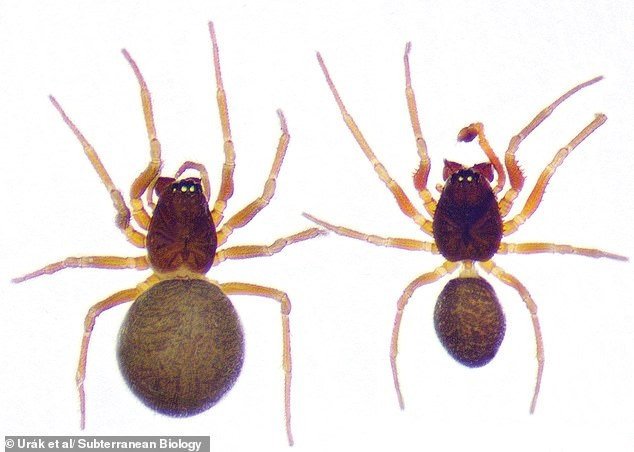World's biggest spiderweb found deep in Sulphur Cave housing over 110,000 spiders
If you're not keen on spiders, look away now. Experts have unearthed the world's largest web that's home to more than 110,000 arachnids, creating a nightmare megacity deep within a cave. The monumental structure stretches 106 square metres along the wall of a narrow, low–ceilinged passage. It is situated deep inside 'Sulphur Cave' on the Albanian–Greek border, around 50 metres from the cavern's entrance.

In This Article:
A two-species megacity of funnel-shaped webs on a cave wall
The sprawling network of thousands of funnel–shaped webs is home to two species – Tegenaria domestica, also known as the domestic house spider, and Prinerigone vagans, a small, moisture–loving spider measuring just 3 mm in length. Their giant web is strikingly similar to that of the lair of Shelob – an enormous, mystical spider that features in the Lord of the Rings. Her home, a winding network of tunnels, is filled with thick, sticky webbing that catches her prey.

First documented case of communal behaviour between two spider species
'The massive colony marks the first documented case of communal behaviour in two spider species.' Researchers estimate around 69,000 domestic house spiders and more than 42,000 P. vagans are sharing the same sprawling structure. Are you scared of spiders? The web is so heavy that, at certain points, it may 'detach from the wall under its own weight'. 'We report the discovery and detailed analysis of an extraordinary spider assemblage in Sulphur Cave,' they wrote in the journal Subterranean Biology. They suggest that the cave's unique sulphur–rich environment may have encouraged the two species to cluster together in record–breaking numbers. Scientists would normally expect domestic house spiders to prey on their smaller neighbours, but the lack of light in the cave may impair their vision, the team said. Instead, they appear to feast on non–biting midges which also call the dark cave their home. Further analysis revealed the spiders living inside the cave are genetically different to their counterparts living outside, indicating they have adapted to their unique surroundings.

Environment and genetics: sulphur cave shapes spider society
'The natural world still holds countless surprises for us,' lead author István Urák, an associate professor of biology at Sapientia Hungarian University of Transylvania in Romania, told Live Science. 'If I were to attempt to put into words all the emotions that surged through me [when I saw the web], I would highlight admiration, respect and gratitude.' The enormous spider web deep inside Sulphur Cave is home to a mixed colony of two different species. The monumental structure stretches 106 square metres along the wall of a narrow, low–ceilinged passage. The cave's unique sulphur–rich environment may have encouraged the two species to cluster together in record–breaking numbers. Further analysis revealed the spiders living inside the cave are genetically different to their counterparts living outside, indicating they have adapted to their unique surroundings. 'Often, we think we know a species completely, that we understand everything about it, yet unexpected discoveries can still occur,' Dr Urák added. 'Such conditions can elicit behaviours that are not observed under 'normal' circumstances.' Concluding their study, the researchers wrote: 'Sulfur Cave in the Vromoner Canyon located on the border between Greece and Albania contains exceptionally abundant and diverse invertebrate communities that thrive in total darkness.'

Spiders and humans: ancient fears and survival instincts
Recent research has claimed that a fear of spiders is a survival trait written into our DNA. Dating back hundreds of thousands of years, the instinct to avoid arachnids developed as an evolutionary response to a dangerous threat, the academics suggest. It could mean that arachnophobia, one of the most crippling of phobias, represents a finely tuned survival instinct. And it could date back to early human evolution in Africa, where spiders with very strong venom have existed millions of years ago. Study leader Joshua New, of Columbia University in New York, said: 'A number of spider species with potent, vertebrate specific venoms populated Africa long before hominoids and have co-existed there for tens of millions of years. Humans were at perennial, unpredictable and significant risk of encountering highly venomous spiders in their ancestral environments.'

